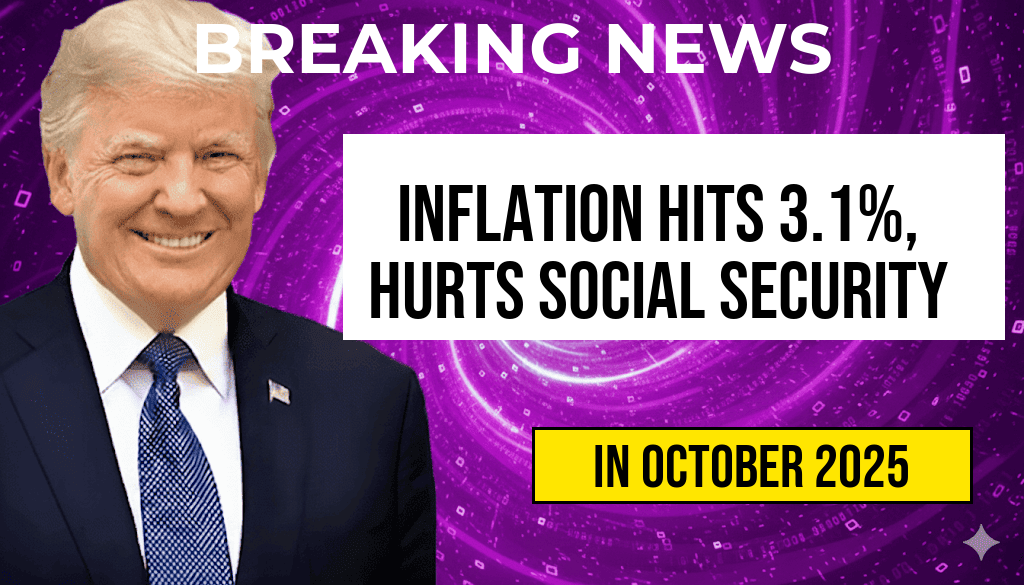Inflation in the United States has surged to 3.1% as indicated by the latest Core Consumer Price Index (CPI) data, a significant rise that raises concerns for those relying on Social Security benefits. This increase undermines the anticipated $49 boost in monthly Social Security payments, which was designed to help recipients keep pace with the rising cost of living. The latest CPI figures, released by the Bureau of Labor Statistics, reveal that many Americans, especially seniors, face challenges as their purchasing power is diminished by inflationary pressures. As essential costs continue to rise, the financial stability of millions of retirees is placed at risk, prompting discussions on the adequacy of current Social Security adjustments.
Understanding the Core CPI and Its Implications
The Core Consumer Price Index, which excludes volatile items such as food and energy, serves as a crucial gauge for underlying inflation trends. The recent jump to 3.1% marks a notable uptick from previous months, suggesting persistent inflationary pressures in the economy. Analysts emphasize that this increase is not just a temporary spike but reflects broader economic realities influenced by ongoing supply chain disruptions and increased demand post-pandemic.
Impact on Social Security Benefits
The $49 increase in Social Security payments, effective for the upcoming year, is intended to help beneficiaries offset rising costs. However, the recent inflation data indicates that this adjustment may fall short of what is necessary to maintain the same standard of living for many retirees. As prices for essential goods and services continue to rise, including housing, healthcare, and transportation, seniors may find their increased payments insufficient.
- Housing costs have surged, particularly in urban areas.
- Healthcare expenses have risen significantly, especially with increased demand for medical services.
- Transportation costs, including fuel prices, have also contributed to overall inflation.
Economic Factors Behind the Inflation Surge
Several economic factors are currently influencing the rise in inflation. These include:
- Supply Chain Issues: Ongoing disruptions in global supply chains have led to shortages of various goods, pushing prices higher.
- Increased Consumer Demand: As the economy rebounds from the COVID-19 pandemic, consumer spending has surged, further straining supply.
- Labor Market Constraints: A tight labor market has driven wages up, contributing to increased costs for businesses, which are often passed on to consumers.
What This Means for Seniors
For seniors relying on Social Security, the implications of rising inflation can be profound. Many individuals on fixed incomes may struggle to adjust to the changing economic landscape. Financial experts recommend that beneficiaries consider several strategies to mitigate the impact of inflation on their budgets:
- Budget Reevaluation: Reviewing and adjusting budgets can help identify areas where spending can be reduced.
- Supplemental Income: Exploring part-time work or alternative income sources may provide additional financial relief.
- Investing Wisely: Seniors may benefit from consulting financial advisors to explore investment opportunities that can outpace inflation.
What Lies Ahead?
As inflation continues to be a pressing issue, policymakers are under increasing pressure to address the needs of vulnerable populations, including seniors. Discussions around potential reforms to the Social Security system are emerging, with some advocating for more robust cost-of-living adjustments tied to actual consumer price increases. Economists also suggest that monitoring inflation trends closely will be essential for effective policy-making.
For more information on the impact of inflation on Social Security and strategies for managing personal finances, individuals can refer to resources such as Forbes and Wikipedia.
| Year | Core CPI (%) | Social Security Increase ($) |
|---|---|---|
| 2022 | 2.1 | 20 |
| 2023 | 3.1 | 49 |
Frequently Asked Questions
What does a 3.1% increase in Core CPI mean for Social Security benefits?
The 3.1% rise in the Core Consumer Price Index (CPI) indicates that the cost of living is increasing, which can impact the purchasing power of Social Security benefits.
How does inflation affect Social Security payments?
Inflation can erode the value of fixed-income payments like Social Security, meaning that even if benefits are increased, they may not keep pace with rising costs.
Why was the $49 Social Security increase deemed insufficient?
The $49 increase in Social Security payments may be inadequate due to the higher-than-expected inflation rate, which diminishes the real value of this increase.
What factors contribute to the rise in Core CPI?
Factors such as increasing prices for goods and services, supply chain disruptions, and higher demand can all contribute to a rise in the Core CPI.
What should Social Security recipients do in light of rising inflation?
Social Security recipients may need to consider adjusting their budgets and exploring additional sources of income to cope with rising costs due to inflation.











